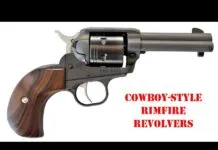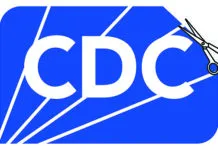The world of premium-grade bolt-action .22 LR rifles has many entries that, frankly, cost a fortune. There are also a great many .22s available new or on the used market that can be bought for, say, less than a C-note, and they may or may not shoot as well as youd like. Somewhere in between, for a bit less than youd pay for a good centerfire bolt-action rifle, lie some of the more interesting rimfire bolt-action rifles. They are fine enough to serve as trainers for centerfire rifles, or to do good work in rimfire competitions of many sorts, and wont make you ashamed to be seen with em on the firing line. Will they shoot up to par? To find out, we acquired two rifles in this general category, the CZ Model 453 Varmint ($530), and the new Remington Model Five ($348), and set them against each other. We thought they were both mighty interesting rifles, and maybe you will too. Heres what we found.
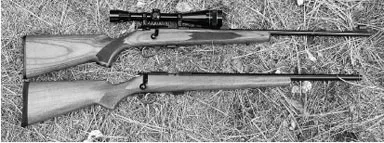
CZ Model 453 Varmint .22 LR
No. 02072, $530
This rifle had a lovely Turkish walnut stock with decent figure, and also had a slightly heavier barrel than is normally seen on a .22 rimfire. This was in keeping with the “Varmint” moniker. There are also lighter-barrel versions, if you prefer, that look more like the Remington Model Five. More on them later.
The fully adjustable trigger was particularly nice. The normal pull, without any tinkering, was decent enough, and had no creep. We could have adjusted it lighter, but chose to use the single-set feature instead. You simply press forward on the trigger to set it, and then it takes just a light touch to fire the rifle. It could be easily unset by putting on the safety and pressing the trigger. We found this to be one of the best features of this rifle. During our bench tests we got nearly twice the accuracy with the set trigger.
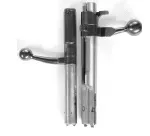
The Turkish walnut was most attractive, nicely and evenly figured on both sides. It was straight with no cast and no cheekpiece, with its well-rounded comb plenty high enough for scope use. The semi-gloss finish was excellent and scratch-resistant, with the grain reasonably well filled. There was no checkering on the forend, which had a wide, flat bottom so it would work well with a field rest. The wrist was checkered, and though it was somewhat filled with finish, it worked well enough. The butt had a thick black rubber recoil pad that kept the gun in place on our clothes, and kept the butt from skidding when the rifle was rested on a slick floor. There were sling-swivel studs on butt and forend. Inletting was very good, with no gaps around the steel trigger guard, and with an even line next to the barrel all along it. The forend bore lightly on the barrel, which was not free floated.
The action was matte blued and carried the standard rimfire groove for scope mounting. The trigger guard was also dull matted. The barrel was a bit more polished, but not so much as to cause glare. All the metalwork was of premium quality, and the overall effect was tasteful, we thought. A simple pinch fore and aft got the five-shot polymer magazine out of the rifle. It loaded easily and went back into the rifle with more precision than we found on the Remington.
We affixed a 12X Leupold scope. The absence of iron sights made mounting the scope onto the CZ much easier than onto the Remington, which had iron sights that got in the way. We made sure the action screws were tight, and then went to the range with four types of ammo. Two were of a hunting nature, CCIs Mini-Mag HP and Remingtons Game Load HP. And two were target loads, Federals Gold Medal and Eleys Tenex Ultimate EPS. We had zero failures or problems of any sort. Feeding was slick and sure, and ejection from the two extractors was positive and effective. We found there was plenty of room behind the trigger to activate the set trigger, which we used exclusively for all our testing. We left the adjustable trigger pulls alone. The set trigger could be altered with an external adjustment, and later disassembly proved the normal trigger was fully adjustable, so you could set it up any way you like. As tested, the set trigger broke at one pound, one ounce, and was very consistent. Unset, the normal pull was 3.5 pounds clean. We found the large-diameter bolt to be smooth in operation, with a precise feel.
The 1:16 inch rate of twist worked well with all ammo tried. The largest group we got with all ammo fired was just over an inch at 50 yards, for five shots. Most groups with both hunting and target ammo were around half an inch, with many smaller than that. There was no noticeable change or drift from hot to cold barrel.
Remington Model Five
No. 89913 .22 LR, $348
Available in standard .22 Long Rifle and .22 WMR (for $362), our rifle had an attractive (to most of us) laminated stock, which has proven to be one of the best ways to eliminate warpage over time. It also came with useful iron sights, and with contours that gave the Model Five a distinctly “Remington” look, despite the fact that it was made in Serbia by Zastava. Our magnet told us that all the visible metal, including sight bases, trigger guard, etc., were steel. Everything was well polished and blued, with a pleasant gleam to the metalwork. Yet it was not so glossy as to be glaring. Our Leupold 12X scope was a lot shinier, for instance. The Model Five looked good to us. Its proportions were excellent, and the overall stock shape was mighty nice. The laminated wood had excellent checkering and a nice semi-gloss, nearly matte finish that gave as good scratch resistance as that on the CZ. The Model Five had borderless checkering on both forend and pistol grip. It looked fine and functioned well. There were sling-swivel studs, and a hard butt pad that was perfectly fitted, even better than the rubber on the CZ.

Bolt operation was slick right from the start, as was that of the CZ. The magazine was a touch harder to get in and out, and a touch harder to load. The safety was a rocker on the right rear corner of the action. Forward was off. The stock fit us well, but not as well as that of the CZ, particularly with the scope. We were able to use the iron sights easily, but the scope was slightly high for comfort. The top edge of the stock was sharper and not quite as comfortable, especially for long sessions at the bench. The Remingtons rear sight got in the way of mounting our 12X Leupold scope The rear sight could be removed, but we chose to mount the scope far enough rearward to clear the rear sight, which worked well enough for us.

Inletting was not quite as good as that of the CZ. The barrel was floated, but with a pressure point near the front of the forend. The heavy, gritty, trigger pull was a big problem. We struggled through a few groups with the six-pound trigger, when suddenly the light over our heads went off. This rifle was not made within the U.S. and therefore was most likely not built with a team of lawyers hovering over the trigger-assembly crew. We guessed the trigger would be reasonable, so we decided to look. One Allen screw, the front one, held the action in place. The rear one simply held the trigger guard to the stock. Sure enough, the trigger was fully adjustable. It had all the trigger adjustments that used to be available to U.S. riflemen during the years before lawsuits gave us lousy, non-adjustable pulls. The adjustments were, of course, all painted with red stuff to look like they were unassailable, but a few easy turns of the front-most screw gave us a decent three-pound trigger pull. But it still had a trace of creep.
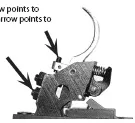
Things picked up, but we thought the groups ought to have been better than we were getting. They seemed to be getting worse. We cleaned the barrel and then things picked right up. (See sidebar.) Ultimately we found the Remington Model Five to have close to, but not as good accuracy as the CZ, which shot everything very well. Accuracy was probably more than adequate, and could probably be fine-tuned with careful ammo selection. Overall, we liked the Remington a lot. We first thought it had a few glitches in ejection, but in all cases the problem was our lack of pulling the bolt back hard enough. It took a stronger pull to eject empties out of the Remington than out of the CZ, just a matter of learning the rifle. Like the CZ, the Model Five had twin extractors. Feeding and ejection, when we did our part, were as good as with the other rifle.
Gun Tests Recommends
****
CZ Model 453 Varmint No. 02072 .22 LR, $530. Our Pick.
We thought this was a well-made and well-fitted rifle with a beautiful piece of wood, and which offered all the accuracy anyone would be likely to need, short of strict target usage. It was, untouched, superior to the Remington in trigger pull and accuracy, and of course in wood grade. We all liked the CZs well-constructed safety, which locked the bolt and the firing pin. As with most CZs in our experience, pulling it toward the rear put it in the firing position, which exposed a red dot. The feel was just right for us. A slight protrusion indicated the bolt was cocked. The muzzle-heavy feel was fine for precision field use, and tended to steady the rifle for less-well-supported shots. We thought this was a fine precision rifle worthy of a good long look by anyone wanting a sound rimfire .22.
If you dont care for the appearance, there are several options with more “Americanized” stock shapes having shorter forends and lighter barrels, and with or without the set trigger. Some are chambered for .17 HMR, .17 Mach 2, or .22 WMR, but the test rifle is available as a .22 LR only. There are some left-hand versions as well. One version without single-set trigger is available for $389, and it still has the nice Turkish walnut. Another version, the CZ 513 Basic, has a beechwood stock, no adjustable trigger, and lists for $247. However, we loved the set trigger and fine wood, and would not consider a CZ without them. Despite its higher cost, wed pick this rifle for its finer qualities and superior accuracy, plus that trigger, over the Remington.
***
Remington Model Five No. 89913 .22 LR, $348. Buy It.
Bottom line, we thought you get a little more for less money with the Remington, but you paid an accuracy and wood-quality penalty. Most of us thought the Remington looked more attractive than the CZ, but to riflemen, beauty is as beauty does. Another subtle difference is that the Model Fives bolt knob requires moving the hand forward from the firing position, whereas the CZ required a more natural lift of the trigger hand. You dont get a single-set trigger with the Model Five, but with the trigger adjustments available, a skilled gunsmith can probably adjust the trigger to be a mighty good one. That CZ set trigger cost important money, too. With the Remington you get iron sights, which many experienced shooters prefer on all rifles that will be taken afield. A suitable scope for the Model Five will most likely let you retain the nice, elevation-adjustable, folding rear sight so youll have a backup set. On that note, the iron sights had a U-notch, driftable rear with sliding elevation plate, and a bead front, protected with a neat hood. What you dont get, and what will be very important to some, is Turkish walnut, superior accuracy, and that delightful set trigger. Its your choice. GT
Written and photographed by Ray Ordorica, using evaluations from Gun Tests team testers.





